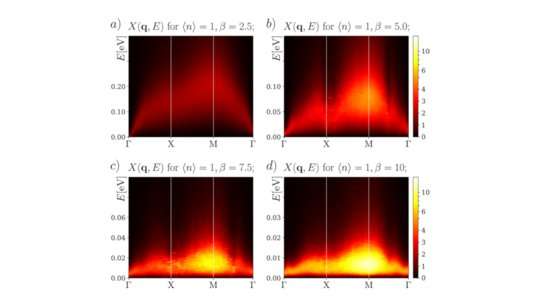Which physical mechanism is responsible for magnetic properties of cuprates upon doping?

An international team of researchers has identified and proved that adding impurities with a lower concentration of electrons stabilizes the antiferromagnetic state of cuprates, high-temperature superconducting compounds based on copper. The research team, led by a senior fellow at Ural Federal University, Evgeny Stepanov, has published the results of the study in npj Quantum Materials.
"We study collective electronic effects in various materials, especially in those that are characterized by fairly strong electron-electron interaction," says Evgeny. "This interaction leads to such effects as charge ordering, magnetism, superconducting state and others. In this article, we investigated how the properties of cuprates change when impurities are added to the system to reduce the electron concentration in the material. Usually, such a process is called hole doping, and the absence of an electron is called a hole."
It is known that cuprates are antiferromagnets in the normal state. Upon doping, the change in the magnetic properties of various cuprates can occur in two scenarios: either antiferromagnetism is destroyed and goes into a canted antiferromagnetic state, or holes begin to form their own magnetic state, which is characterized by a certain wavenumber.
"In the compound that was studied, we witnessed the second scenario, in which antiferromagnetism is stabilized due to strong electron interactions. The holes form their magnetic state, which leaves the antiferromagnetic state unchanged increasing with doping," explains Evgeny Stepanov. "What is important is that this process occurs in a wide range of electron concentrations. This allows the antiferromagnetic state to be in resonance at a certain energy. It is still not known for certain which physical mechanism exactly leads to the appearance of superconductivity in these materials. Since we are not the only group studying these materials, there is a theory that it is this resonant antiferromagnetic that is responsible for the superconducting state in cuprates."
Superconductivity is the property of materials to have zero electrical resistance. In this state, electrons can move freely within a material, transferring an electric charge. Usually, the superconducting state is realized at a sufficiently low temperature of several tens of degrees on the Kelvin scale and/or at high pressure. So at room temperature, the superconducting state cannot be obtained yet.
From an experimental point of view, cuprates have already been well studied. Theoretically, it is quite difficult to understand what happens in these materials under the action of hole doping and why they exhibit such properties. "The reason is very strong electron-electron interaction, which does not allow the use of standard theoretical methods for describing electronic properties in such materials," said the scientist. "Our task is to use the more advanced methods we developed, try to theoretically explain the presence of a resonant antiferromagnetic state and see what happens to this state upon doping."
Thus, the results obtained by the authors make it possible to determine which physical mechanism stabilize the resonant antiferromagnetic state, which is possibly responsible for high-temperature superconductivity in cuprates.
More information: Evgeny A. Stepanov et al, Quantum spin fluctuations and evolution of electronic structure in cuprates, npj Quantum Materials (2018). DOI: 10.1038/s41535-018-0128-x
Provided by Ural Federal University



















